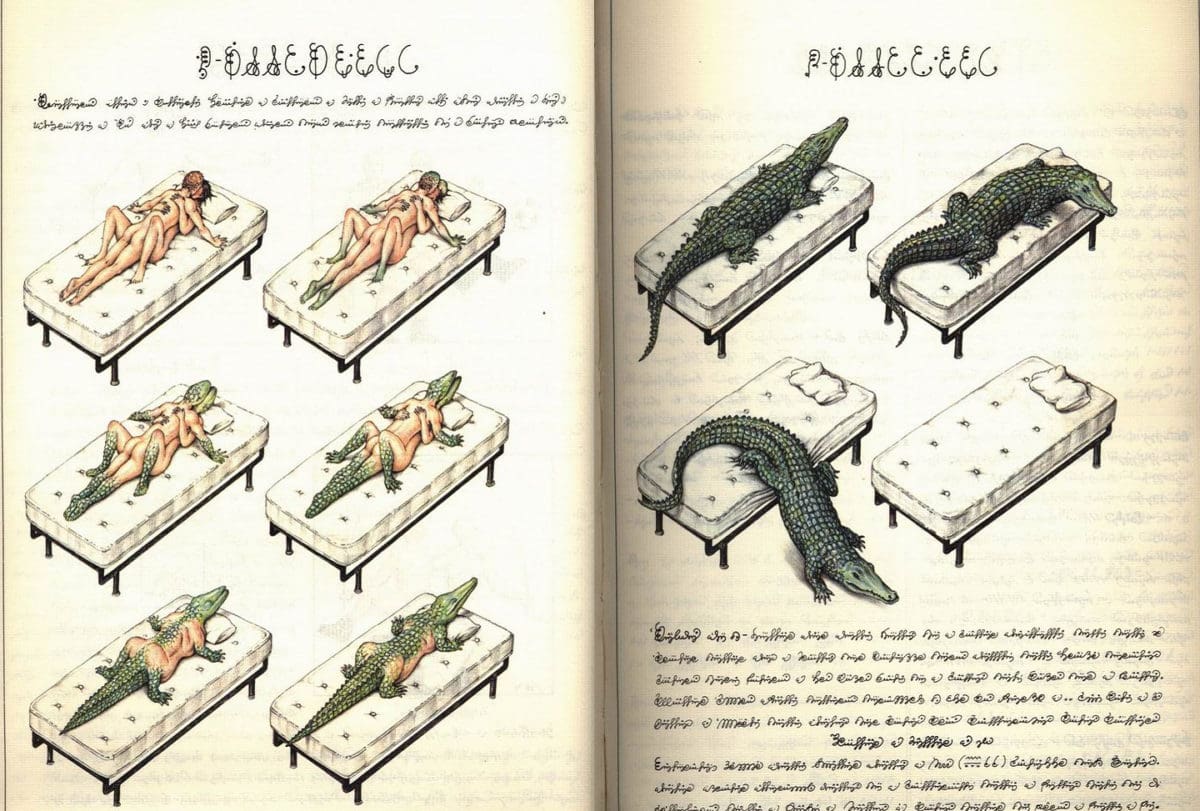From Wikipedia, the free encyclopedia
Codex Seraphinianus, originally published in 1981, is an illustrated encyclopedia of an imaginary world, created by the Italian artist, architect, and industrial designer Luigi Serafini during thirty months, from 1976 to 1978.[1] The book is approximately 360 pages long (depending on edition), and written in a strange, generally unintelligible alphabet.
The book is an encyclopedia in manuscript with copious hand-drawn, colored-pencil illustrations of bizarre and fantastical flora, fauna, anatomies, fashions, and foods. In a talk at Oxford University in 2009, Serafini stated that there is no meaning hidden behind the script of the Codex, but in his own experience it was closely similar to automatic writing. He wanted his alphabet to convey to the reader is the sensation that children feel in front of books they cannot yet understand, although they see that their writing does make sense for grown-ups.




























